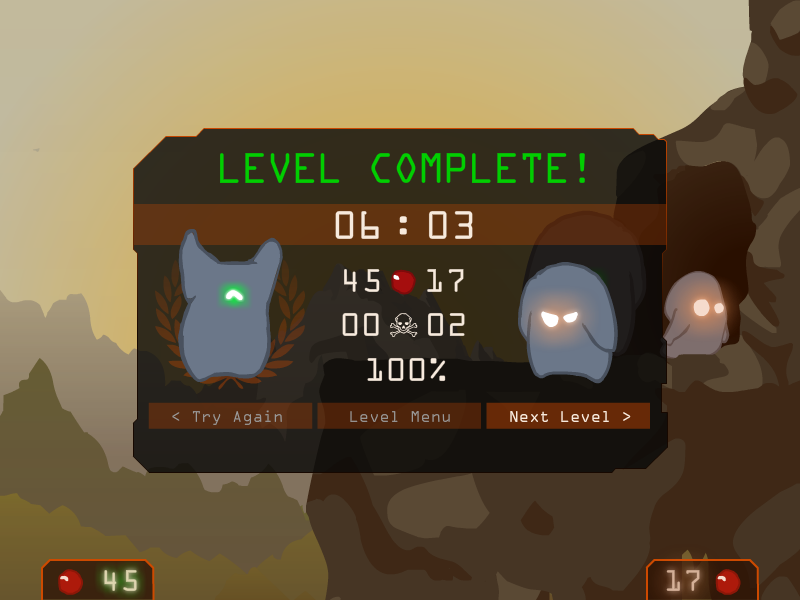When designing a game for the first time, you tend to take many things for granted, especially the little things that seem so obvious and logical that you probably never really put a lot of thought in them. Being a young student in game design this happened to me quite often so far. One of these little things are the so-called „coins“.
If you ever played oldschool platformers like Super Mario, Donkey Kong or maybe the Commander Keen series, you probably know what I am talking about. In Super Mario the coins literally were coins, the developers of Donkey Kong made you collect bananas and in Commander Keen basically everything which didn’t look like an enemy, shot at you or tried to eat you was a coin.
Coins in Mercury Shift
[kml_flashembed publishmethod=“static“ fversion=“10.0.0″ movie=“http://www.klonk-games.de/wp-content/uploads/2012/07/coins.swf“ width=“400″ height=“100″ targetclass=“flashmovie“ play=“true“ loop=“false“ quality=“high“ base=“La La LA“]
[/kml_flashembed]
As we were brainstorming and planning our flash game Mercury Shift, there have always been coins in my mind. Things the players had to pick up and collect. Of course, there had to be coins in our game too. At least that’s what I thought. But when are coins really necessary and what do they even do?
The first time when we found that coins are necessary was at early playtests of the game. The players didn’t seem to realize where to go and what to do. Of course this was not only due to the lack of coins but also to the fact that our user guiding was in a very early stage. However, we discovered that as soon as we had coins, players started to collect them, argue about them and also automatically just went where coins were to pick them up.
Now it was fairly easy to show the players if we intended them to go somewhere or not without telling them to do so. If there is coins to collect, there must be some way to get to them even though it might not be possible at first look. Furthermore coins serve our drive to collect things, which is probably something natural and derives from our human „hunters and gatherers“ past. Coins are an easy way to guide the players through your level, especially if the level is not standard from left to right and you start in the middle of it.
In the screen above you can see the end of a level. The green player 1 collected 45 coins while the red player 2 only collected 17. Together they both collected 100% of the coins in that particular level. You can also see how much time was needed to finish the level and how many deaths each player had.
Usually coins also give you some reward. They often represent some kind of score to encourage players collecting them. Sometimes there’s a max. quantity of coins which then, after reaching this particular score, provides you with something useful. A power-up like the mushroom in Super Mario for example. That’s what coins in Mercury Shift lack.
One of our biggest goals before developing the game was that it should be a multiplayer, more specifically a 2-player-coop game, where players rely on each other and must play together in order to solve a puzzle. At the same time we wanted to create an environment where you want to have fun with your partner by teasing and pasting each other to add a little twist to the gameplay. Therefore if one of the players dies, he loses half of his collected coins which can be grabbed by the other guy. This mechanic really added a lot of fun to the game. Throwing your partner into a death area and watching coins fly through the air.
Right now we are working on our next project: Mercury Shift 3D (working title).The game will be in 2,5D. We want to put more emphasis on collecting coins, giving them a purpose in the game. Players must collect coins to unlock higher levels or unlock new abilities. We want to encourage teamplay even more and also making strategical decisions when it comes to solving a puzzle where you might die and lose a lot of coins.
Generally you should ask yourself the following questions when designing coins in your game:
- What is the purpose of coins in your game? People should never ask „why are there coins?“
- Are they fun? If not, what can be changed to make them fun? (feedback)
- Do you need a score to add to your game experience and if not, can you use your coins to represent score?
- Do coins add to your game play/main mechanic of the game?
I hope I could give some tips and advice for the game designers among you and also a little „insight“ for those who are just interested in what challenges our gamedesign department has to face. More posts will follow, mainly about our progress on the latest version of „Mercury Shift: 3D“ and we will try our best to keep them rather short, but interesting and entertaining to read.




